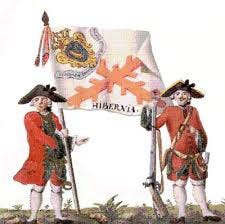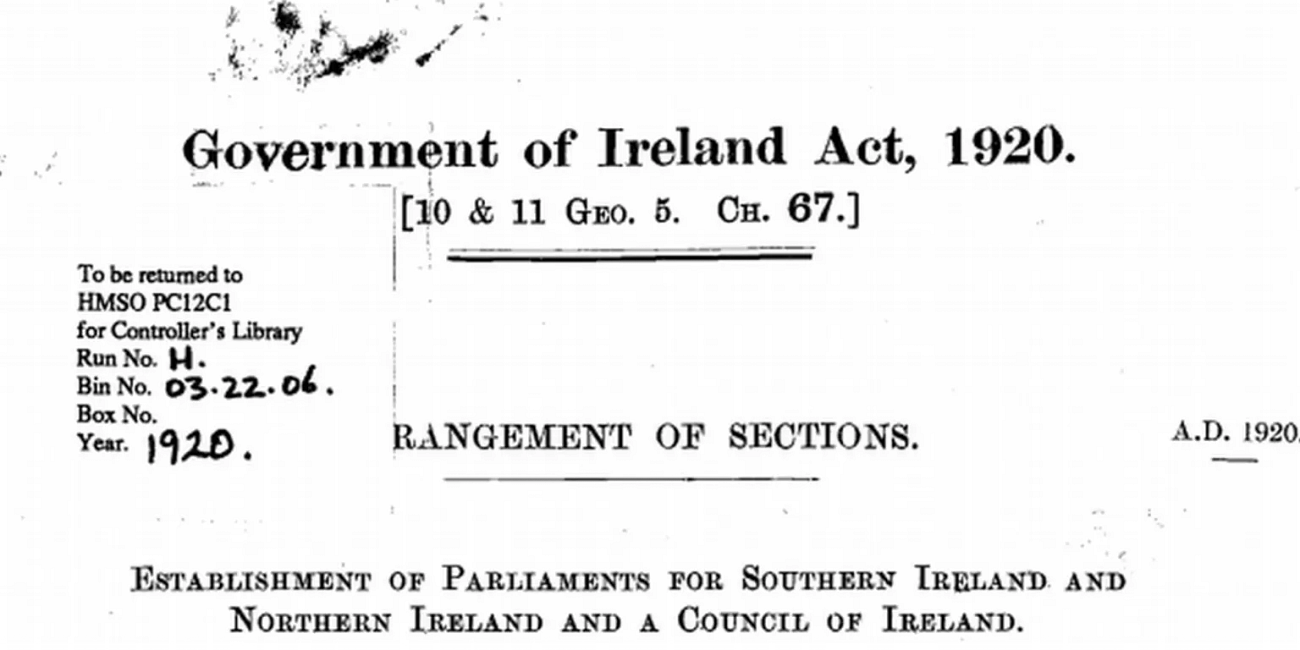The Irish in Exile—How the Wild Geese Kept the Fight Alive
Irish History Through the Lens of Rebellion & Resistance
When empire forces a people into exile, it expects them to disappear—to become ghosts in foreign lands, to forget their homeland, to surrender their fight.
But the Irish did not disappear.
They became soldiers, revolutionaries, and leaders in wars across the world. They carried their struggle beyond Ireland’s shores, fighting not just for their survival, but for justice, for sovereignty, for the dream of one day returning home to a free Ireland.
These exiled warriors became known as The Wild Geese—a name that would become legendary in Irish history.
And their fight never ended.
Who Were The Wild Geese?
The term “Wild Geese” originally referred to the Irish soldiers and noble families who fled Ireland after The Flight of the Earls (1607) and The Treaty of Limerick (1691). But over time, it came to represent any Irish fighter exiled by British oppression.
The Wild Geese took up arms across Europe, the Americas, and even the Caribbean—wherever the fight for freedom was being waged.
✔ The Flight of the Earls (1607) – After the defeat of Gaelic Ireland, Irish nobility and warriors sought refuge in Spain, France, and the Netherlands, forming Irish regiments abroad.
✔ The Treaty of Limerick (1691) – After the Williamite War, 14,000 Irish soldiers were forced into exile, many joining French, Spanish, and Austrian armies.
✔ The American Revolution (1775-1783) – Irish immigrants, many descendants of the Wild Geese, played a critical role in fighting against British rule.
✔ The Haitian Revolution (1791-1804) – Irish mercenaries and revolutionaries fought alongside enslaved Africans in the successful overthrow of French colonial rule.
✔ The Latin American Wars of Independence (1808-1833) – Irish fighters joined Simón Bolívar in his battle against Spanish imperialism.
The Wild Geese were not just mercenaries. They were exiled revolutionaries, carrying Ireland’s fight with them wherever they went.
Fighting For Freedom Across the World
The Irish exile experience was not just one of loss—it was one of continued resistance.
Spain & France: Irish Regiments in European Wars
Many exiled Irish fighters joined the armies of Catholic Spain and France, hoping that one day these nations would help free Ireland from British rule.
✔ The Irish Brigade in France – One of the most famous units, these Irish soldiers fought in major European wars for over a century. Their battle cry was:
🗡️ “Cuimhnigí ar Luimneach agus ar feall na Sasanach!” (Remember Limerick and the treachery of the English!)
✔ The Spanish Hibernia Regiment – Irish soldiers fought for Spain against the British, including in the Caribbean and Latin America.
✔ Austria & The Holy Roman Empire – Irish officers became high-ranking generals in European wars, keeping alive the dream of returning to Ireland with an army.
Though they never succeeded in regaining Ireland’s freedom, they never stopped fighting.
The Americas: The Irish & The Fight Against Empire
The descendants of the Wild Geese would become critical players in revolutionary movements across the Americas.
✔ The American Revolution (1775-1783)
Over half of the Continental Army was of Irish descent, and many of George Washington’s generals were Irish-born. The most famous among them:
John Barry – Founder of the U.S. Navy, an Irishman who fought the British at sea.
Richard Montgomery – An Irish officer who died leading an attack on British forces in Canada.
The Sullivan Expedition (1779) – Led by Irish-American General John Sullivan, this campaign targeted British-allied forces.
✔ The Haitian Revolution (1791-1804)
Many Irish fighters and sailors joined Toussaint Louverture and Jean-Jacques Dessalines in their battle to overthrow French colonial rule.
Some were exiled revolutionaries, others were sailors who refused to fight against the enslaved Africans rising up.
Haiti became the first free Black republic in the world—proving that empire could be defeated.
✔ The Latin American Wars of Independence (1808-1833)
Irish soldiers played a role in fighting against Spanish colonialism:
Simón Bolívar’s Irish Legion – A group of Irish exiles who joined the fight to free South America from Spanish rule.
William Brown – An Irish-born admiral who founded the Argentine Navy, helping Argentina secure its independence.
The Irish exile experience was no longer just about Ireland—it had become part of a larger fight against empire itself.
The Black-Irish Connection: Exile, Rebellion & Solidarity
The story of the Wild Geese is not just an Irish story—it is part of a global pattern of forced exile and resistance.
The Irish & African Diaspora – Both the Irish and Africans were forced into exile by colonial powers, sent across the world in chains or in desperation.
Fighting Against British Rule – The Irish fought in Haiti, America, and Latin America—alongside Africans and Indigenous people, all battling empire together.
Shared Cultural Resistance – Irish and African music, dance, and storytelling traditions merged in the Caribbean and the U.S., forming new resistance cultures.
Empire wanted to erase them. Instead, they reshaped history.
How The Wild Geese Inspired Future Revolutions
Though the Wild Geese never returned to liberate Ireland, their legacy inspired future rebellions.
✔
The Irish Rebellion of 1798: When Ireland United Against Empire
In the long and bloody history of Ireland’s fight for independence, few moments shine as brightly—or as tragically—as the Rebellion of 1798.
The 1798 Irish Rebellion – Inspired by the American and French revolutions, the Irish once again rose up against British rule.
✔ The Irish Republican Army (IRA) – Many IRA leaders in the 20th century traced their revolutionary lineage back to the Wild Geese.
✔ Anti-Colonial Movements – The Irish struggle for independence became a model for anti-colonial resistance worldwide, from India to Africa to Palestine.
The Wild Geese may have fought in foreign wars, but their hearts were always in Ireland.
Final Reflection: Exile is Not Defeat
The British exiled Ireland’s warriors, believing it would break the Irish spirit.
But the Wild Geese did not vanish. They became soldiers, revolutionaries, and leaders in the global fight against empire.
Ireland’s story of exile is one of loss—but it is also one of resilience.
And yet, when the oppressor tells your story, it will always be told in a way that diminishes you.
Take the phrase "The Fighting Irish."
To some, it evokes images of drunken brawls—because that is the version of history that was crafted by those who sought to demean and dehumanize the Irish. The British and later, the American ruling class, took the unbreakable spirit of Irish resistance and reduced it to a stereotype, stripping it of its revolutionary roots.
But the truth?
The Fighting Irish was born out of the fierce resilience that kept Irish resistance alive for centuries—the same fire that carried the Wild Geese into battle, that fueled rebellion after rebellion, and that still lives on today.
To this day, Ireland stands firm in its resistance against colonialism, not just in its own land but in its unwavering stance with Palestine, its solidarity with liberation struggles across the world, and its continued fight to free Ireland from British occupation.
The oppressor will always try to define who you are.
But the truth is this: The Fighting Irish are not drunks, nor are they broken. They are the ones who refused to be erased. They are the ones who turned exile into a movement. They are the ones who fought then and continue to fight today.
Because oppression is never the final word. Resistance is.
Further Learning: Watch, Read & Experience
📺 Watch:
The Wild Geese (1978) – A dramatization of Irish mercenaries in Africa (fictional but inspired by real events).
📖 Read:
"The Wild Geese: Irish Soldiers in Exile" by Mark McLaughlin – A historical account of Irish fighters abroad.
"How the Irish Became White" by Noel Ignatiev – Analyzes how Irish immigrants navigated race and empire in the U.S.
Engage:
Research other exiled revolutionary groups—who else carried their fight across the world?
Look into the history of the Irish in the Caribbean—how did they shape resistance there?
Explore how exile has shaped resistance in your own cultural history.
Tomorrow’s Lesson: The Irish & The Caribbean—From Indentured Servitude to Revolution
The Irish were not just soldiers in the Caribbean. Many were sent as indentured servants—some alongside enslaved Africans. Over time, Irish and African cultures intertwined, forming a unique legacy of resistance that still echoes today.
Join us as we explore how Ireland and the Caribbean share a deeper history than most realize—one shaped by forced labor, rebellion, and solidarity.
📖 Support This Work: Keep History Alive
This article is free for March, but after that, it will be available only through 59 Days of Resistance: A Journey Through Black and Irish Liberation.
👉 Get the full curriculum here: 59 Days of Resistance Guide
In solidarity and liberation,
Desireé B. Stephens CPS-P
Educator | Counselor | Community Builder
Founder, Make Shi(f)t Happen




